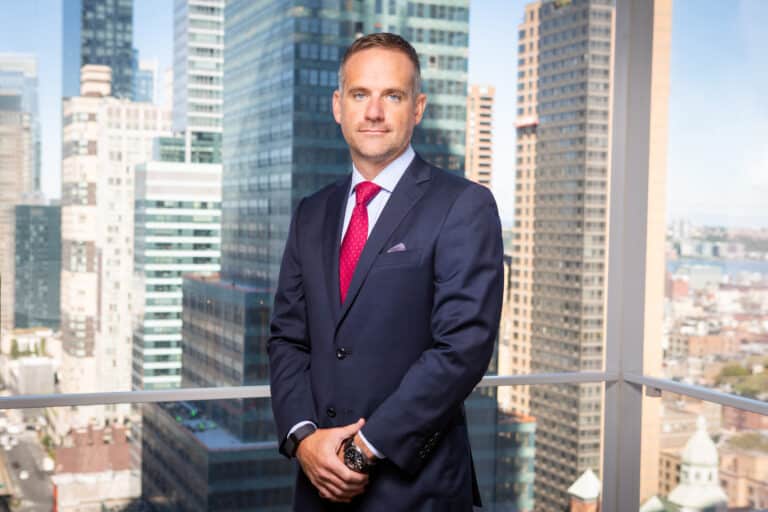(This article first appeared as Beyond Liquidity on Markets Media. Beyond Liquidity is produced in collaboration with Liquidnet.)
The buy side needs to do more with less. This ongoing challenge starts at the top with enterprise-level resources, and filters down to the trading desk’s need to find liquidity — with fewer human traders, and often in liquidity-constrained markets.
The decisions asset managers face in accessing liquidity and achieving operational efficiency were highlighted at the Security Traders Association’s annual market structure conference, held earlier this month in Washington, D.C.
In an Oct. 12 panel entitled Every Last Detail: Achieving Efficiency in Asset Management, the first question posed by moderator Jessica D’Alton, Executive Director, Head of Market Structure and Liquidity Strategy Americas, UBS was how to address inaccessible liquidity.
Frank Loughlin, Global Head of Execution Services at AllianceBernstein, cited a two-pronged approach. “One, when you think about the calculus around an order, consider that some liquidity is inaccessible and understand what portion of the volume you can interact with,” he said. “And two, attack the notion of inaccessibility, which can be fluid. You need to engage with firms to make liquidity partly or fully accessible…The conversation exists if you want to have it.”
Mark Govoni, CEO of Liquidnet, noted the challenge of fragmented markets, with more than 40 trading venues in the U.S. “Institutional sentiment toward interacting with liquidity has evolved with the evolution of the market,” Govoni said. “You have to work with partners across the sell side to access liquidity in ways that go beyond the status quo.”
Timothy Flynn, Co-Head of U.S. Sector Trading at Fidelity Investments, said traders need to educate portfolio managers on what liquidity is accessible and what liquidity is inaccessible, so they’re on the same page with regard to what a trade’s cost will be. Flynn said a close trader-PM relationship is especially important given how fragmentation heightens the risk of signaling intent to the market and increasing trading cost.
Trading costs can be seen as binary, according to Loughlin: the cost for trades executed in one day, and the much higher cost for trades that take more than one day to complete.
“The biggest step-up in cost is from day one to day two, and then it proceeds linearly,” Loughlin said. “We do everything we can to shorten duration…If you unnecessarily stretch an order, the costs fluctuate with volatility, and at least anecdotally it feels harder to trade, to find the liquidity you need.”
Flynn noted that large buy-side firms are getting better and minimizing the transaction cost of large orders. “We’re investing in low touch solutions, and we’re leveraging high touch in different ways, including non-traditional venues such as dark pools and closing facilities.”
Panelists addressed the ongoing debate about whether it’s better for trading and investing firms to develop their own technology, or procure solutions from technology vendors.
“Buy-vs-build is more relevant than ever today,” Govoni said. “Historically the answer was usually build, but that has evolved. The key is to figure out what is your core differentiator, and make sure you invest in that. Beyond that, be open-minded about outsourcing what’s not core to your offering.”
Loughlin noted a time cost to building technology. “We all romanticize that if you build it, it will be perfect, but the upshot is, see you in 10 years when it’s done,” he said.
Flynn said the best option is often to buy, but with the flexibility to customize to ensure there is global interoperability across a firm’s technology systems.
The panel discussion then turned to efficiency, in terms of enabling trading desks to do more with less.
Govoni said Liquidnet is focused on optimizing analytical tools, in order to provide data faster, and to provide more insight around trade orders.
Loughlin noted that buy-side firms are seeking to deploy artificial intelligence to boost the efficiency of the enterprise. “It’s about scale and operating leverage, and our biggest cost is people,” Loughlin said, noting that technology has enabled AllianceBernstein to reduce its global equity trading staff from 38 in the late 2000s, to 13 today.
“What are the value-added functions we want traders to focus on?” Loughlin said. “Once we define what we want them to spend time on, can we automate as much of everything else as possible?”
Lastly, panelists were asked about their focus for the next three years. Flynn said alternative products such as active ETFs and alt strategies such as merger arbitrage and quantitative overlay, each of which needs to complement the legacy business; Govoni said efficiency and automation, in the form of better tools and analytics; Loughlin said active ETFs and next-gen liquidity access.
Improving liquidity access “has been moving slowly, but there are always new opportunities,” Loughlin said.






